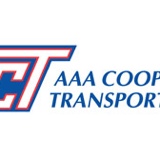Information
-
Document No.
-
Audit Title
-
Shop
-
Conducted on
-
Prepared by
-
Location
-
Supervisor
2.0 - General Condition
-
2.1 - Is the OSHA poster up to date?
-
2.4 - Is the entrance to the yard and office clean and tidy? Company Standard
-
2.5 - Are aisles marked and kept clear? Standard 1910.
-
2.6 - Are materials in process and finished product neatly stored?
-
2.7 - Are rubbish containers provided and used (waste baskets in a safe position
-
2.8 - Is lighting and ventilation adequate for intended process?
-
2.9 - Is the overall condition of the building and maintenance good? Company Standard
-
2.10 - Are the clean up procedures adequate? Standard
-
2.12 - Is good house keeping maintained? Standard
-
2.13 - Mechanics trained on safety procedures?
-
2.14 - Is the Storm Water Plan available, and current? EPA Standard
-
2.15 - Is the shop and yard free of oil stains.
3.0 - Machinery
-
3.3 - Are machine guards in place on all grinders, saws, etc., and in good condition
-
3.1 - Are machines kept clean? Company Standard
-
3.2 - Is machine area kept clear of obstructions? Company Standards
-
3.4 - Are lock out tag procedures followed.<br>
-
Are trucks been work with have lock out tags.<br>Battery cables disconnected and lock out
-
3.5 - Do only authorized personnel operate equipment? Company Standard
-
3.6 - Do mechanics wear proper clothing?
-
3.7 - Are potential hazards blocked with barriers to prevent injury?
-
3.8 Are Air Compressors In safe working conditions<br>With cage cover
-
3.9 - Is stationary machinery securely anchored to prevent moving
-
3.11 - Are all powered and hand tools in good condition and free of defects?
-
3.14 - Are drip pans in place to prevent spills?
-
3.15 - Is lighting adequate?
-
3.16 - Is noise level controlled? Standar
-
3.17 - Are gas can metal and secure ?
4.0 - Electrical
-
4.1 - Are extension cords in good shape, grounding plug in place, insulation in good shape and free of any tape?
-
4.4 - Any broken plugs, sockets, or switches?
-
4.7 - Are inside breaker switches labeled?
-
4.9 - Is access to control boxes kept clear?
-
4.14 - Extension cords not hanging from metal structures; piping, nails, hooks, ladders, or scaffolds?
-
4.15 - No extension cords pass through walls, ceilings, doors, or windows? Company Standard
-
4.16 - Extension cords are not subject to vehicle traffic and/or equipment traffic? Company Standard
-
4.17 - Are extension cords across walkways? Standard
-
4.18 - Are extension cords free of splices or tape?
-
4.19 - Are portable power tools in good condition?
5.0 - Fire Prevention and Flammable Materials
-
5.1 - Are oxygen and acetylene bottles properly stored and chained?
-
5.2 - Are compressed gas cylinders stored 20 ft. away from heat sources.
-
5.3 - Are oxygen and acetylene stored 20 ft. apart or by a 5 ft. high,l?
-
5.4 - Are fire extinguishers clearly marked and easily accessible?
-
5.5 - Are fire extinguishers checked by a third party annually and tagged?
-
5.6 - Are extinguishers readily available near welding, painting, and oily clean up areas?
-
5.7 - Are stored items kept from accumulation that could cause a hazard (i.e. tripping,fire,explosion or pest harborage)?
-
5.8 - Are "No Smoking" signs displayed and enforced in designated areas?
-
5.10 - Are Flammables in approved flammable cabinets? Standard
-
5.12 - Are all soiled rags stored in approved metal containers with gravity type closing lids?
-
5.13 - Are fire exits kept clear, accessible and clearly marked?
-
5.14 - Do fire exits open easily from the inside? Standard
-
5.15 - Are all doors marked with "exit" or "not an exit" signs?
-
5.16 - Are static discharge wires used when transferring flammables from one container to another? (Caps)
-
5.17 - Are attic and platform storage areas clean and free of trash?
-
5.18 - Are propane bottles stored outside, have identifying signs, and secure?
6.0 - Material Handling and Storage
-
6.1 - Are conveniently placed racks and bins for small parts provided? Company Standard
-
6.3 - Is adequate clearance provided for material handling equipment and are clearance signs posted?
-
6.5 - Are dollies or jack stands, and auto jacks in good condition?
-
6.6 - Are hazardous chemicals handled with proper PPE when required?
-
6.7 - Do all employees use proper lifting methods? Company Standard
-
6.9 - Are fork lift compressed gas cylinders inspected to insure they are in good condition?
-
6.11 - Are fork lift operators properly trained and records on file? Standard
7.0 - First Aid
-
7.1 - Is a trained first aider available on site? Standard 1910.151(b)
-
7.2 - Is first aid given promptly and by a first aider for minor injuries?
-
7.3 - Are company emergency numbers posted along with the incident reporting protocol map? Company Standard
-
7.5 - Is there a practical first aid manual on location? Company Standard
-
7.7 - Are first aid cabinets and contents clean and orderly?
-
7.8 - Are contents regularly checked? Company Standard
-
7.9 - Are cabinet clearly labeled? Company Standard
-
7.10 - Are cabinets easily accessible? Company Standard
8.0 Safety Equipment
-
8.1 - Is personal protective equipment maintained in a sanitary and reliable condition?
-
8.2 - Is face and eye protection used when there is a reasonable probability of injury (i.e. welding, cutting, grinding, etc.)?
-
8.4 - Is foot protection used when there is a probability of injury?
-
8.5 - Is respiratory protection used where there is a danger from dust, fog fumes, smoke, vapors, etc.?
-
8.6 - Are employees using hearing protection in required areas or when exposed to high levels of noise?
9.0 Walkways
-
9.1 - Are isles and passageways kept clear? Standard
-
9.2 - Are isles and walkways marked? Standard
-
9.3 - Are wet floors covered with non-slip a material? Standard
-
9.4 - Are holes in the floor, sidewalk or other walking surfaces repaired properly, covered or otherwise made safe? Standard
-
9.5 - Are materials or equipment stored in a such a way that sharp projectives will not interfere with the walkway?
-
9.6 - Are spills cleaned up immediately?
11.0 - Hazard Communication
-
11.1 - Is there a MSDS station with a list of the chemicals in the workplace
-
11.2 - I there a written hazard communication program?
-
11.3 - Are MSDS sheets readily available to employees? Standard
-
11.4 - Is there an employee training program for hazardous substances?
-
11.6 - Are containers labeled properly? Standard
-
11.7 - Do chemical storage areas have adequate containment?
-
11.8 - Are eye wash stations easily accessible? Standard
13.0 - Outside - Environmental
-
13.1 - Materials and stored equipment covered?
-
13.2 - Drum storage area under cover?
-
13.3 - All drums have plugs in holes?
-
13.4 - Are empty drums stored on their sides so rain water can not collect in them?
-
13.5 - Are empty drums disposed of in a timely manner?
-
13.7 - Are surface areas clear of potential pollutants and oil stains?
-
13.8 - Spill kits on site, stocked and ready for use?
-
13.9 - Lids on dumpsters closed and in good condition?
-
13.10 - Is metal dumpster free of material that are covered in oils or chemicals?
-
13.11 - Is the wash bay free of garbage and debris?
Safety cones
-
Are safety cones 36 inches <br>
-
Are safety cones stencils and in good condition
Drains
-
Are all drains free of debris and cleared of water
Restrooms
-
Are restrooms cleans and in good working conditions
Fuel Stations
-
Are fuel stations secure
-
Fuel hose in good condition
-
Fuel hose properly stored
-
Fuel hose free of leaks
Air & Water hose
-
Air or Water Hose properly stored
Vegetation
-
Grass and weeds maintain around shop<br>
-
Trash kept inside trash cans
-
Add signature
-
Add signature











